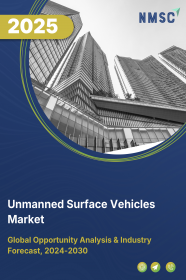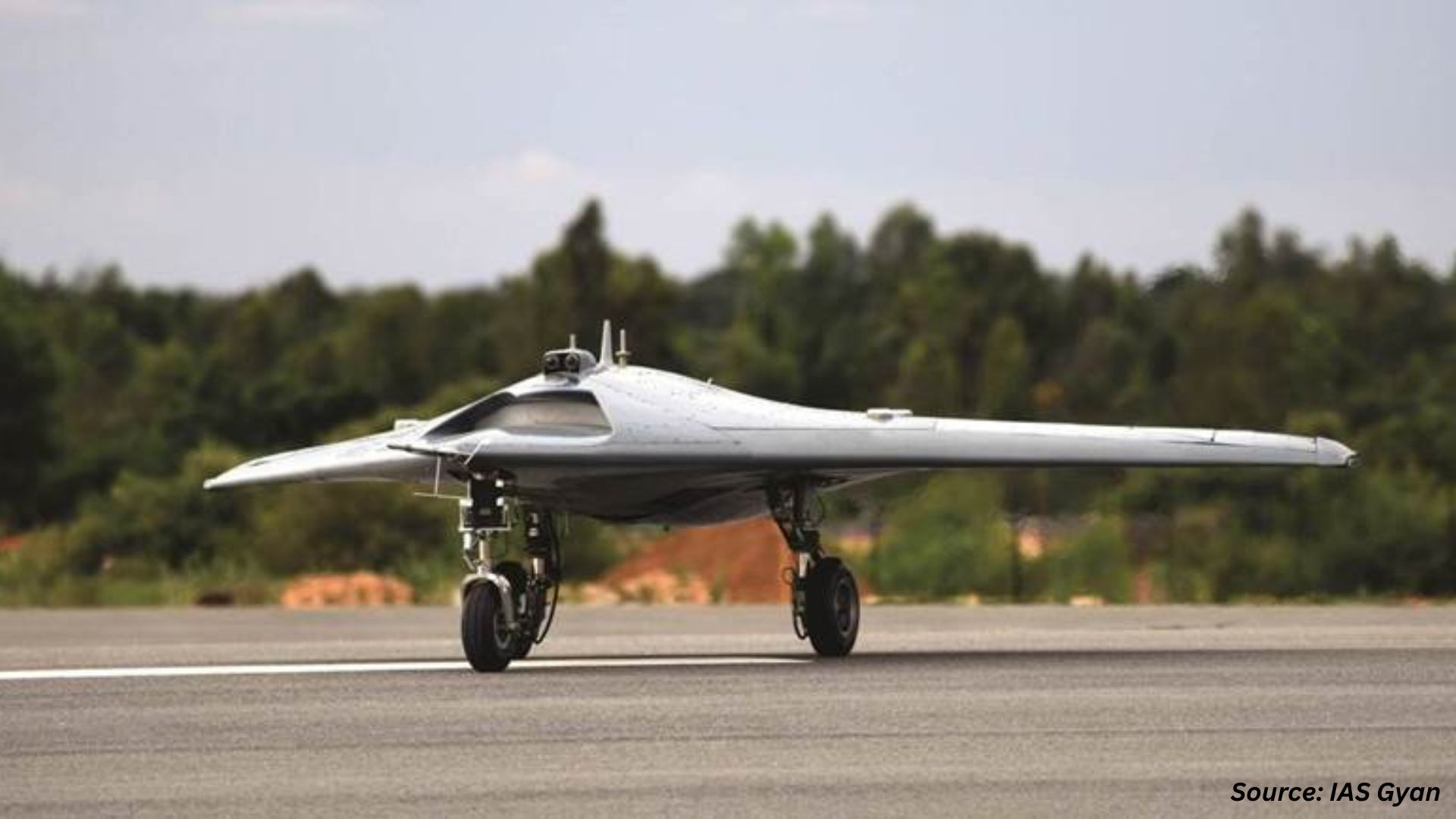
Europe Unmanned Ground Vehicle Market by Mode of Operation (Tethered, Teleoperated, and Autonomous), by Mode of Locomotion (Tracked, Wheeled, Legged, and Hybrid), by Size (Small (10-200 LBS), Medium (200-500 LBS), Large (500-1000 LBS), and Others), by System (Payloads, Controller Systems, Navigation Systems, Power Systems, and Other Systems), by End User Industry (Military and Defense, Agriculture, Mining, Law Enforcement, and Others) – Opportunity Analysis and Industry Forecast, 2024–2030.
Industry: Aerospace & Defense | Publish Date: 10-Oct-2025 | No of Pages: 81 | No. of Tables: 115 | No. of Figures: 60 | Format: PDF | Report Code : AD2569
Europe Unmanned Ground Vehicle Market Overview:
The Europe Unmanned Ground Vehicle Market size was valued at USD 535.8 million in 2023, and is predicted to reach USD 775.8 million by 2030, with a CAGR of 5.4% from 2024 to 2030. In terms of volume, the market size was 3699 units in 2023, and is projected to reach 8009 units by 2030, with a CAGR of 11.7% from 2024 to 2030.
Unmanned ground vehicles (UGVs) are robotic platforms designed to function autonomously on land without direct human control. From compact, agile units to larger, rugged models capable of handling rough terrain, UGVs come in various sizes to meet diverse needs. While some are specialized for tasks such as pipeline inspection or handling hazardous materials, others offer versatility for multiple applications. Equipped with sensors, cameras, and specialized equipment, these vehicles are well-suited to perform a wide array of tasks. UGVs are employed in inspection, surveillance, mapping, and search and rescue operations. They are deployed in hazardous, repetitive, or contaminated environments, spanning urban, rural, and off-road settings.
UGVs play integral roles in military, search and rescue, agricultural, and transportation sectors. They operate autonomously, leveraging advanced navigation systems, or they can be remotely controlled by human operators. A significant advantage of UGVs is their capability to navigate and execute tasks in environments considered too dangerous or inaccessible for humans, such as bomb disposal, hazardous material inspection, or search and rescue operations in collapsed structures. Additionally, UGVs excel in tasks that are repetitive or monotonous for humans, including surveillance and patrolling duties. Moreover, they contribute significantly to agriculture and forestry by assisting in tasks such as crop monitoring, mapping, and inspection of irrigation systems.
The Increasing Adoption of UGVs in Defense Sector Propels the Europe Unmanned Ground Vehicle Market
The presence of leading producers and exporters of military equipment in countries such as the UK and Germany fuels the steady rise of the Unmanned Ground Vehicles (UGV) market in Europe. These nations have a substantial demand for UGVs in the defense sector, driven by the need for advanced military equipment. The reliance on UGVs for various defense applications, such as reconnaissance, surveillance, and logistics, acts as a significant driver for market growth in the region. The continuous modernization efforts within the defense industry further propel the adoption of UGVs, emphasizing their importance in maintaining national security and military effectiveness.
Rising Government Initiatives Towards the Adoption of UGVs Drives the Europe UGV Market
The growing research and development initiatives, coupled with increased government funding, play a crucial role in driving the expansion of the UGV market in Europe. Government support stimulates innovation and fosters collaboration between industry players and research institutions, leading to the development of more advanced UGV technologies. These advancements result in UGVs with improved capabilities and effectiveness, meeting the evolving demands of military applications. The emphasis on technological innovation not only enhances the performance of UGVs but also drives market growth by creating a competitive landscape conducive to innovation and product development.
High Cost and Lack of Standardization of UGVs Restrain the Europe Unmanned Ground Vehicle Market Growth
The significant expenses associated with developing and deploying Unmanned Ground Vehicles (UGVs) pose a major obstacle to market growth. Typically, UGVs require substantial investments in both their development and production phases, potentially dissuading some companies or organizations from investing in them. These vehicles rely on advanced technologies and specialized components, resulting in high production and maintenance costs. Additionally, integrating UGVs into existing systems and processes can be complex and time-consuming, further driving up expenses. Moreover, the lack of standardization in the UGV market impedes growth. With various types and sizes of UGVs available, often tailored for specific tasks or environments, companies may encounter challenges in selecting the appropriate UGV, while manufacturers face obstacles in producing products compatible with diverse systems and applications.
The Convergence of AI and the Advancement of Intelligent UGVs Generate Numerous Opportunities
The implementation of artificial intelligence (AI) in Unmanned Ground Vehicles (UGVs) opens up new possibilities for the advancement of intelligent UGVs. Equipped with sophisticated technologies such as machine learning and natural language processing, these vehicles can autonomously execute tasks and make decisions at an advanced level, thereby enhancing their precision and reliability and positioning them as valuable assets across various industries.
The advent of intelligent UGVs has the potential to revolutionize diverse sectors by augmenting efficiency, reducing reliance on human labor, and fortifying safety measures. Within the military and defense domain, intelligent UGVs serve roles in reconnaissance and surveillance, providing vital intelligence while mitigating risks to human personnel. Similarly, in agriculture, they contribute to activities such as precision farming, augmenting crop yields and minimizing resource consumption. Consequently, the development of intelligent UGVs presents a significant market opportunity, poised to profoundly impact various industries and foster fresh avenues for growth and innovation.
The UK Holds a Dominant Position in the Europe UGV Market
The UK holds a dominant position in the European unmanned ground vehicle (UGV) market due to several key factors. Firstly, the UK has a robust defense industry with significant investment in advanced military technologies, including UGVs. This strong defense sector fosters innovation and development, allowing UK companies to produce cutting-edge UGVs that meet the stringent requirements of military and defense applications. Additionally, the UK benefits from strategic partnerships and collaborations with other European countries and international allies, enhancing its access to expertise and resources in UGV development. Furthermore, the UK's favorable regulatory environment and supportive government policies contribute to the growth of the UGV market by encouraging research, development, and adoption of UGV technologies. Overall, these factors collectively position the UK as a leader in the European UGV market, driving its dominance in the region.
Finland is Expected to Show Steady Growth in the Europe UGV Market
Finland is anticipated to exhibit steady growth in the Europe unmanned ground vehicle (UGV) market due to several factors. Firstly, Finland boasts a strong focus on innovation and technological advancement, with a robust ecosystem supporting research and development in the defense and industrial sectors. Additionally, Finland's strategic geographical location and its proximity to potential conflict zones drive the demand for advanced military technologies, including UGVs, to enhance defense capabilities. Furthermore, the country's emphasis on sustainability and efficiency aligns with the benefits offered by UGVs in various applications, such as logistics, surveillance, and border control. These factors collectively position Finland as a promising market for UGVs in Europe, fostering steady growth in the foreseeable future.
Competitive Landscape
Several market players operating in the Europe unmanned ground vehicle industry include Armtrac, BAE Systems, Clearpath Robotics (Rockwell Automation, Inc.), ECA Group, Elbit Systems, KNDS Group, L3Harris Technologies, Lockheed Martin Corporation, Milrem AS, QinetiQ Group, Rheinmetall AG, Rheinmetall AG, Roboteam, Teledyne FLIR LLC, Thales Group. These market players are adopting various strategies to maintain their dominance in the market.
Europe Unmanned Ground Vehicle Market Key Segments
By Mode of Operation
-
Tethered
-
Teleoperated
-
Autonomous
-
Fully Autonomous
-
Semi Autonomous
-
By Mode of Locomotion
-
Tracked
-
Wheeled
-
Legged
-
Hybrid
By Size
-
Small (10-200 LBS)
-
Medium (200-500 LBS)
-
Large (500-1000 LBS)
-
Very Large (1000-2000 LBS)
-
Extremely Large (>2000 LBS)
By System
-
Payloads
-
Sensors
-
Radars
-
Lasers
-
Cameras
-
Motor Encoders
-
Articulated Arms
-
GPS Antennas
-
Other Payloads
-
-
Controller Systems
-
Navigation Systems
-
Power Systems
-
Solar Rechargeble Battery
-
Electric Non-Solar Rechargeble Battery
-
Lithium-ion Battery
-
Sealed lead acid battery
-
Nickel Cadmium
-
Nickel metal hydride battery
-
- Other Systems
-
By End User Industry
-
Military and Defense
-
Agriculture
-
Mining
-
Law Enforcement
-
Others
By Country
-
Europe
-
The U.K.
-
Germany
-
France
-
Spain
-
Italy
-
Netherlands
-
Denmark
-
Finland
-
Norway
-
Sweden
-
Russia
-
Rest of Europe
-
Key Players
-
Armtrac
-
BAE Systems
-
Clearpath Robotics (Rockwell Automation, Inc.)
-
ECA Group
-
Elbit Systems
-
KNDS Group
-
L3Harris Technologies
-
Lockheed Martin Corporation
-
Milrem AS
-
QinetiQ Group
-
Rheinmetall AG
-
Rheinmetall AG
-
Roboteam
-
Teledyne FLIR LLC
-
Thales Group
REPORT SCOPE AND SEGMENTATION:
|
Parameters |
Details |
|
Market Size in 2023 |
USD 535.8 Million |
|
Revenue Forecast in 2030 |
USD 775.8 Million |
|
Value Growth Rate |
CAGR of 5.4% from 2024 to 2030 |
|
Market Volume in 2023 |
3699 Units |
|
Unit Forecast in 2030 |
8009 Units |
|
Volume Growth Rate |
CAGR of 11.7% from 2024 to 2030 |
|
Analysis Period |
2023–2030 |
|
Base Year Considered |
2023 |
|
Forecast Period |
2024–2030 |
|
Market Size Estimation |
Million (USD) |
|
Growth Factors |
|
|
Countries Covered |
12 |
|
Companies Profiled |
15 |
|
Market Share |
Available for 10 companies |
|
Customization Scope |
Free customization (equivalent up to 80 working hours of analysts) after purchase. Addition or alteration to country, regional, and segment scope. |
|
Pricing and Purchase Options |
Avail customized purchase options to meet your exact research needs. |

















 Speak to Our Analyst
Speak to Our Analyst
























